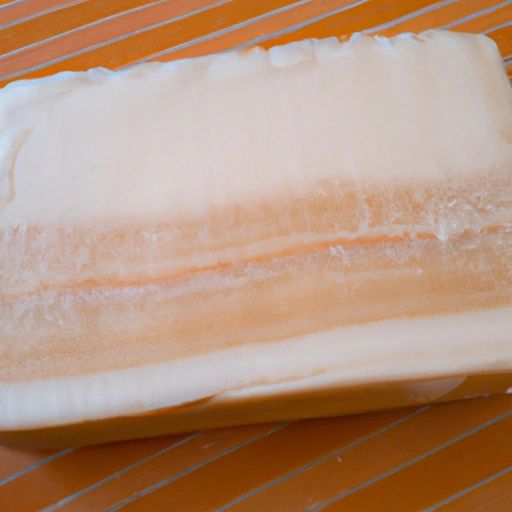Lard
Description

Lard is a semi-soft white fat derived from the fatty parts of the pig. It is obtained by rendering the fat tissues of the pig and has been a traditional staple in many cuisines for centuries. Lard is known for its high smoking point and its ability to create flaky pastries and deeply flavored dishes. In recipes, lard is measured in various units: ounces (oz) and pounds (lb) in American; grams (g) and kilograms (kg) in European; and teaspoons (tsp), tablespoons (tbsp), cups (c) in both systems, as well as by weight (azjan).
Common uses
Lard is traditionally used in baking, frying, and as a spread. Its neutral flavor and high smoke point make it ideal for high-heat cooking methods, such as deep-frying and sautéing. In baking, it is cherished for its ability to create a flaky texture in pie crusts and pastries. Lard can also be spread on bread or used as a base for condiments and sauces.
Nutritional value
Calories
One tablespoon (about 13 grams) of lard contains approximately 115 calories.
Protein
Lard contains no protein.
Fat
One tablespoon of lard has about 13 grams of fat, of which 5 grams are saturated fat, 5.5 grams are monounsaturated fat, and 1.4 grams are polyunsaturated fat.
Carbohydrates
Lard contains no carbohydrates.
Vitamins
Lard is a source of fat-soluble vitamins, particularly vitamin D.
Minerals
While not a significant source of minerals, lard may contain trace amounts of iron and selenium.
Health benefits
Lard is a source of monounsaturated fats, which can support cardiovascular health when consumed in moderation. It is also high in vitamin D, which is essential for bone health and immune function. However, the health benefits of lard are still being researched and debated among nutrition experts.
Potential risks
Lard's high saturated fat content can be a concern for heart health if consumed in large amounts. It is often recommended to use lard in moderation and balance it with unsaturated fats found in plants and fish. Individuals with dietary restrictions or health concerns should consult with a healthcare provider before incorporating lard into their diets.
Common recipes
Lard is used in making pie crusts, traditional biscuits, tamales, pâtés, and refried beans. It is also incorporated into savory dishes, such as roasts and stews, to add depth and flavor.
Cooking methods
Lard can be used in various cooking methods, including baking, frying, sautéing, and roasting. It is praised for its ability to withstand high temperatures without smoking or breaking down.
Pairing with other ingredients
Lard pairs well with savory ingredients like pork, poultry, potatoes, and green vegetables. In baking, it complements both sweet and savory fillings and is often used in combination with butter for added flavor and texture.
Summary
Lard is a versatile cooking fat with a long history in many traditional cuisines. Despite its decline in popularity during the 20th century, lard has made a comeback in both professional and home kitchens. With its high smoke point and ability to impart a flaky texture, lard is suited for a variety of cooking methods and recipes. While it should be consumed in moderation due to its saturated fat content, lard remains a cherished ingredient for its unique culinary qualities.